Disclaimer: This post contains affiliate links to handpicked partners, including tours, gear and booking sites. If you click through or buy something via one of them, I may receive a small commission. This is at no extra cost to you and allows this site to keep running.
Where the Roman past is layered with the medieval and the modern, a visit to Tarragona, Spain, means losing yourself in centuries of living history, preserved in its stratum of golden structures and hidden levels.
The coastal city of Tarragona in northeastern Spain is known for its scattering of ancient Roman ruins from its days as a colony known as Tarraco, founded in 218 BC. While not the only Roman city of Spain, this was one of the first Roman cities beyond the Western Empire stronghold on the Italian peninsula.
A new city built on top of an ancient city, the fun of exploration in the UNESCO assemble of sites in Tarragona is to piece together the old and new, the latter of which has either replaced the former or has yet to be uncovered and preserved.
Here’s what to see and where to find all the relics of Tarragona city’s beginnings.
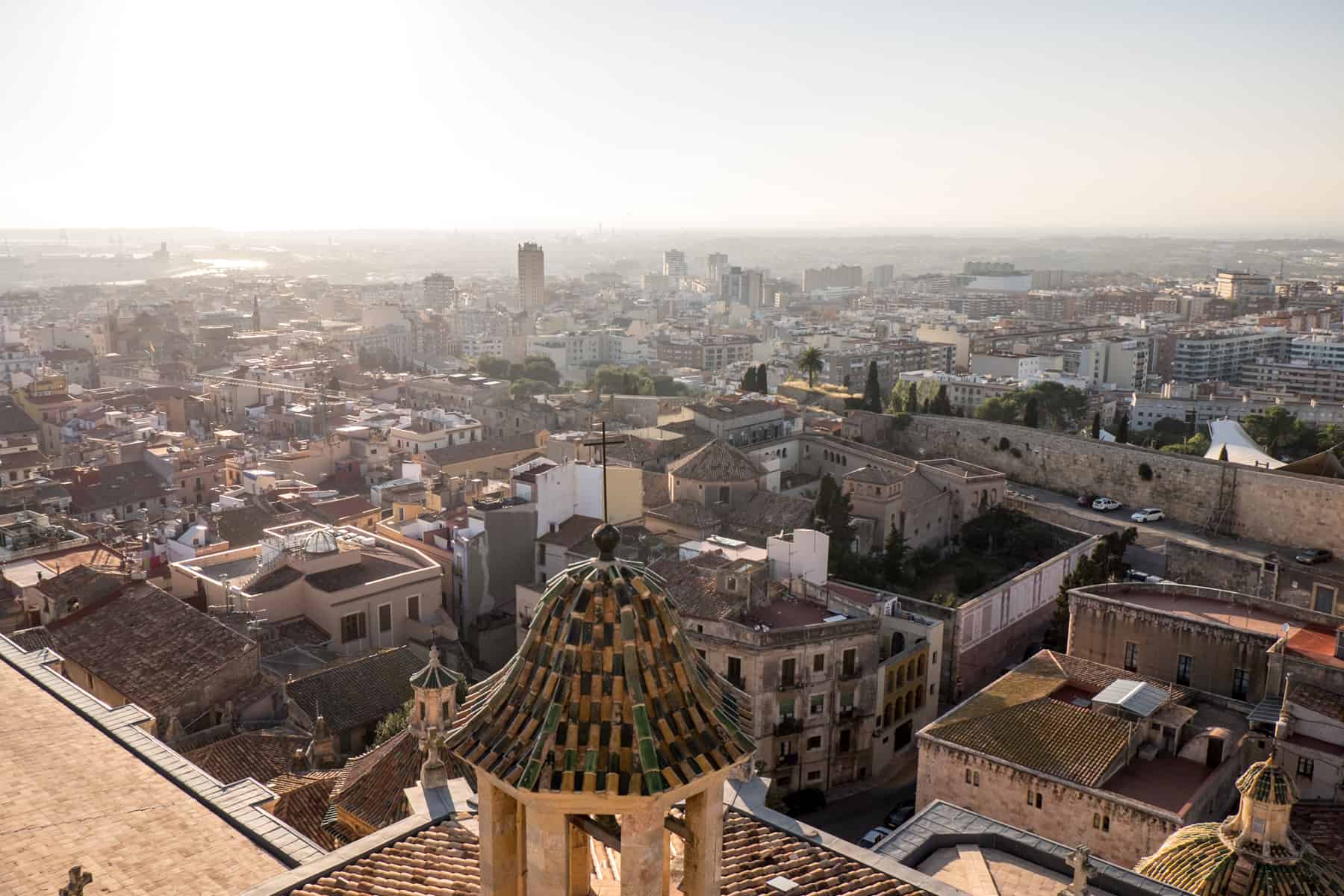
The Living History of Tarragona – The First Roman City of Spain
Contents
Where to Find the Monuments of Roman Tarragona
How many days do you need in Tarragona to see everything? For leisurely sightseeing, and the chance to enjoy the sun clad avenues, local markets, and laidback restaurants and bars that this Mediterranean coastal city exudes, two days in Tarragona would be ideal.
However, if you are short on time or day-tripping from Barcelona, Tarragona’s major Roman sites can be seen in a day since it is a compact city and easily accessible on foot.
Tarragona Amphitheatre
The first stop was the Tarragona Amphitheatre – one of only seven in Spain country preserved and opened to the public. You can wander freely around the majority of this 2nd-century structure on the coast of the Mediterranean Sea, where you can stand in the grounds and imagine how it once accommodated 12,000 eager spectators.
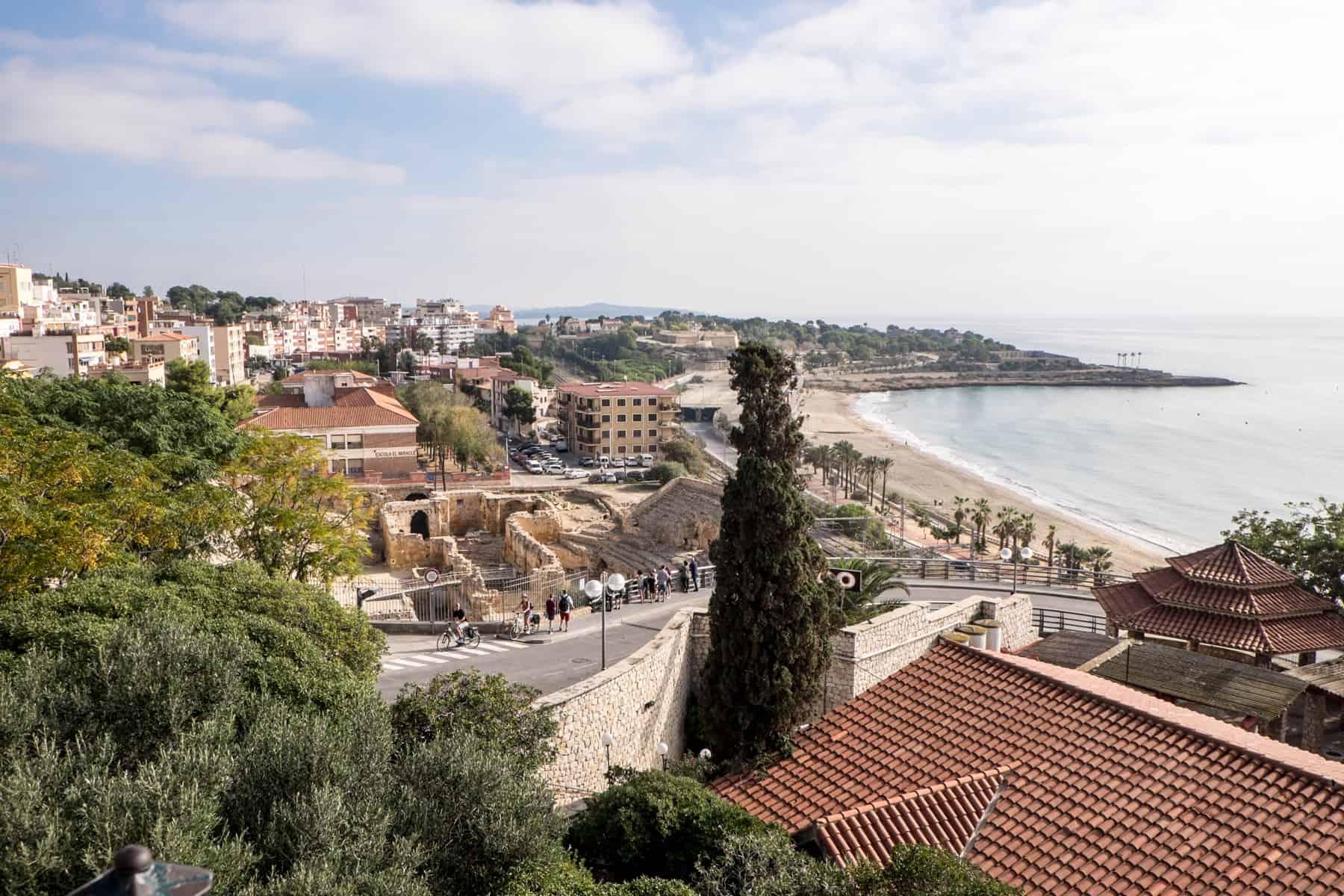
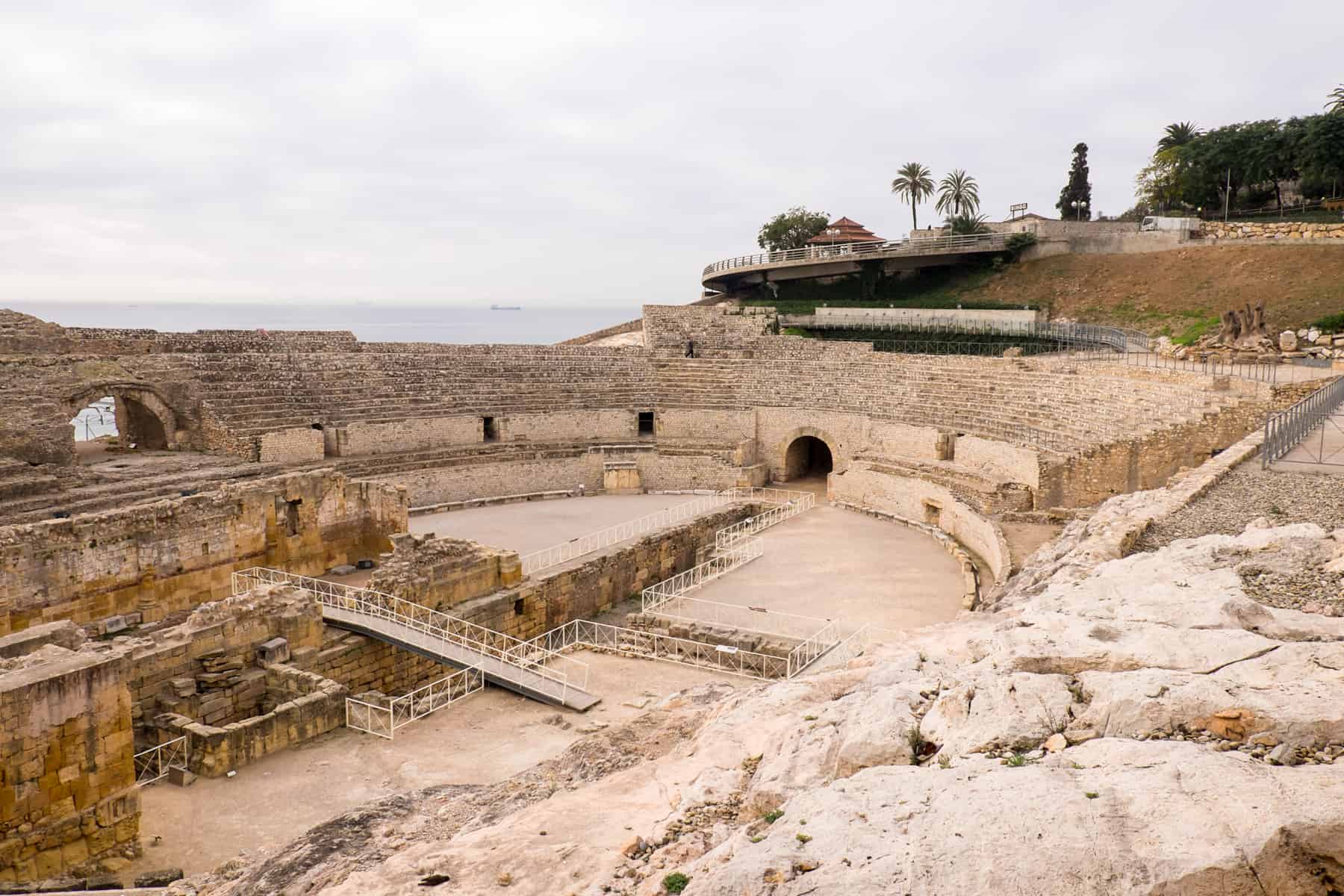
The Roman Tarragona Amphitheatre with a view to the Mediterranean Sea
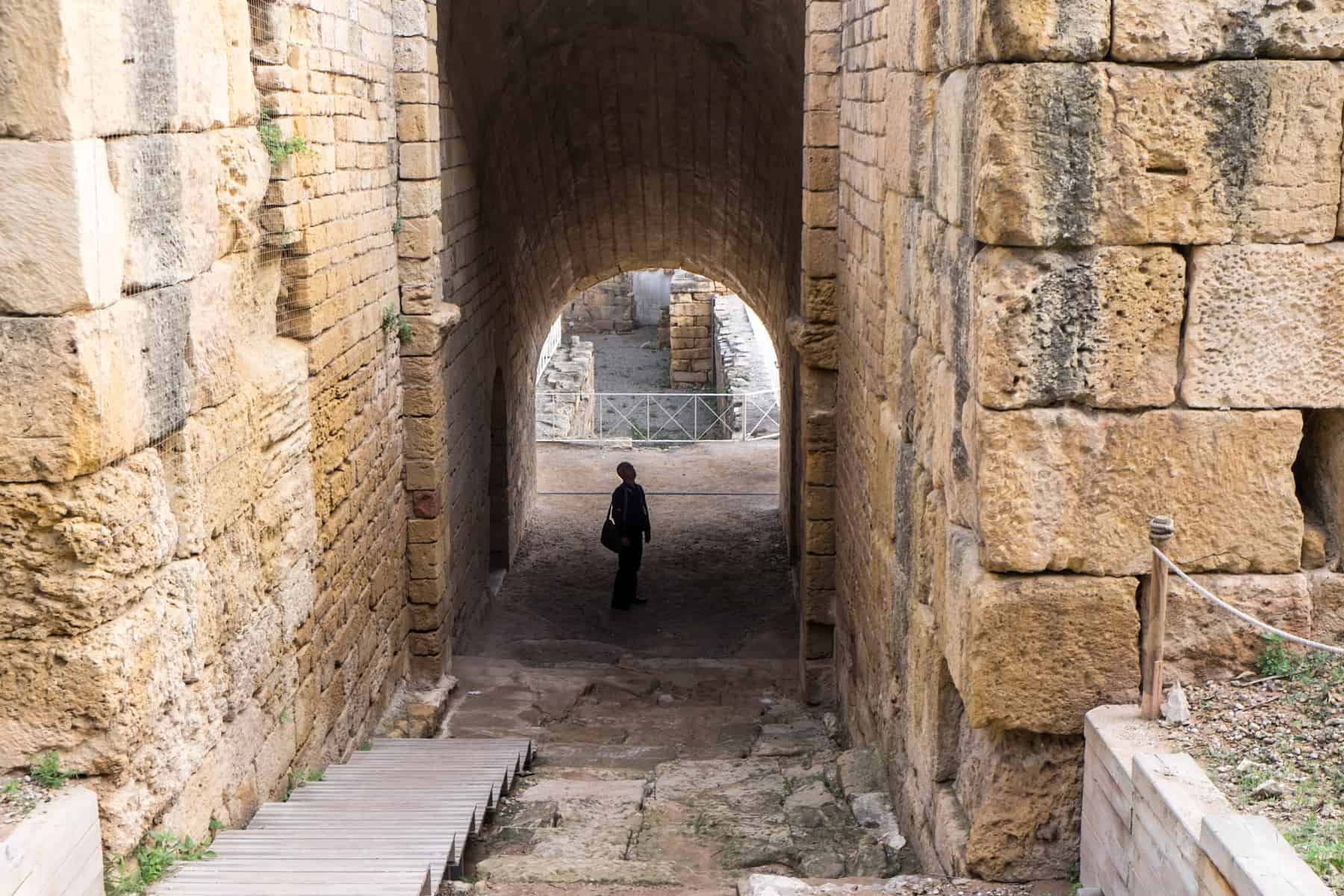
The large entrances leading inside Tarragona Amphitheatre
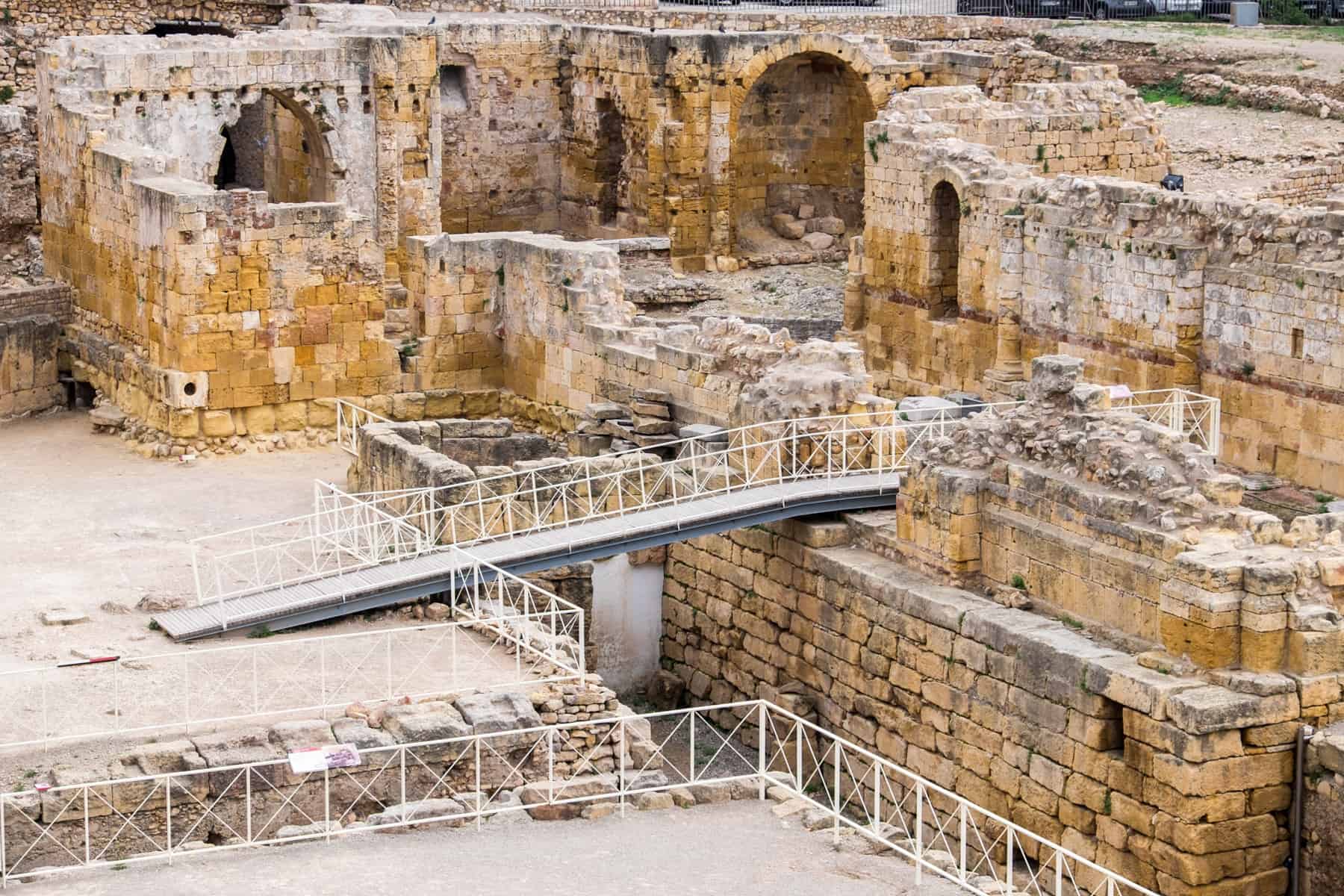
Get up close to the Roman ruins of the Amphitheatre.
Historically layered itself, the amphitheatre was built upon during the 6th and 7th centuries, when the Church built a basilica in memory of the martyrs who perished during the days of Christian persecution. Various temples and other structures were built over the top, including a prison and holiday apartments, before it was finally uncovered for its original foundations as a Roman city to be laid bare.
Roman Circus and Praetorian Tower
A short walk from the amphitheatre is the Roman Circus and Praetorian Tower (Circ Romà), once used to hold grand horse and chariot races. You can climb to the top for a 360 view of the city, and parts of the lower spectator archways remain.
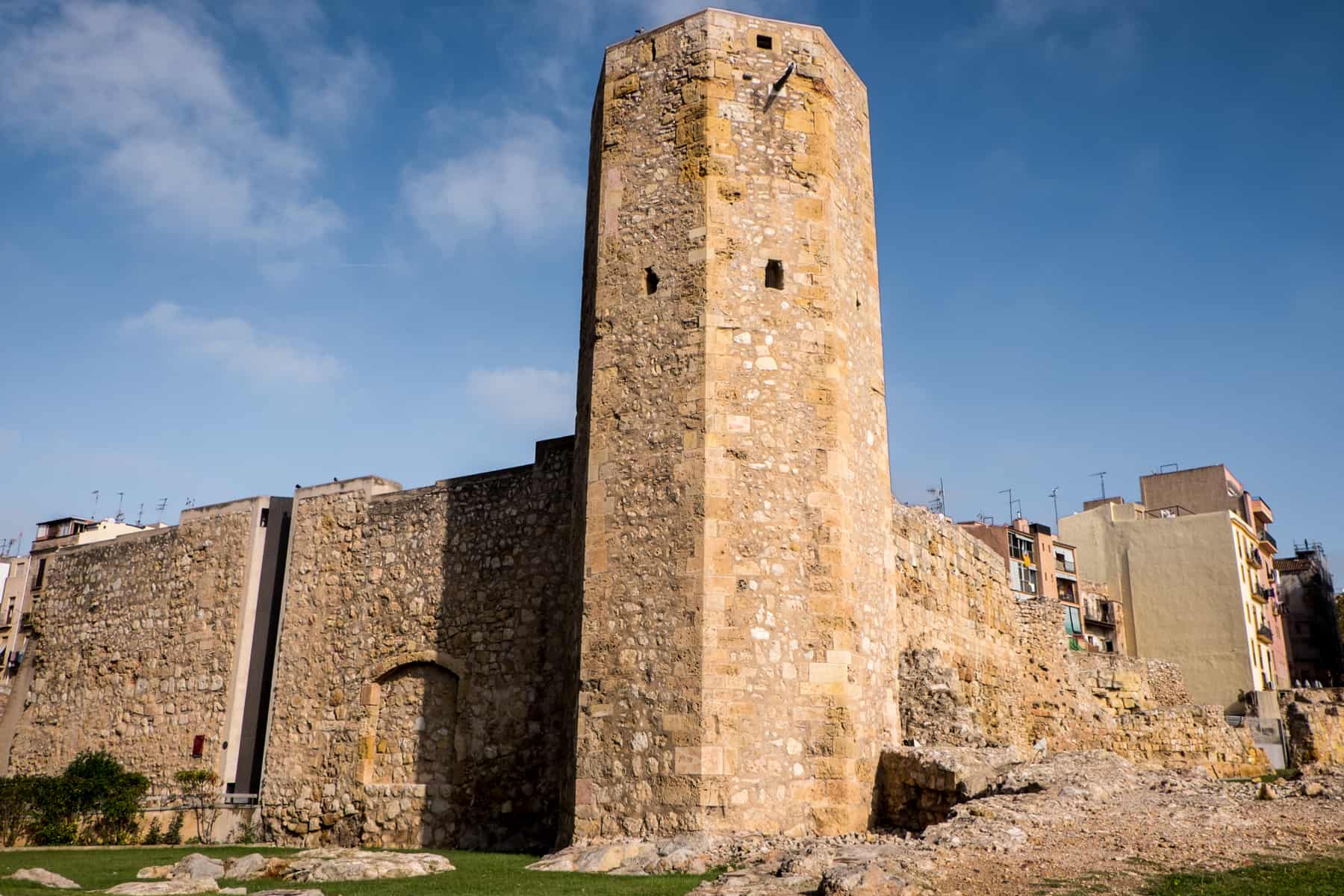
Approaching the Roman Circus and Praetorian Tower
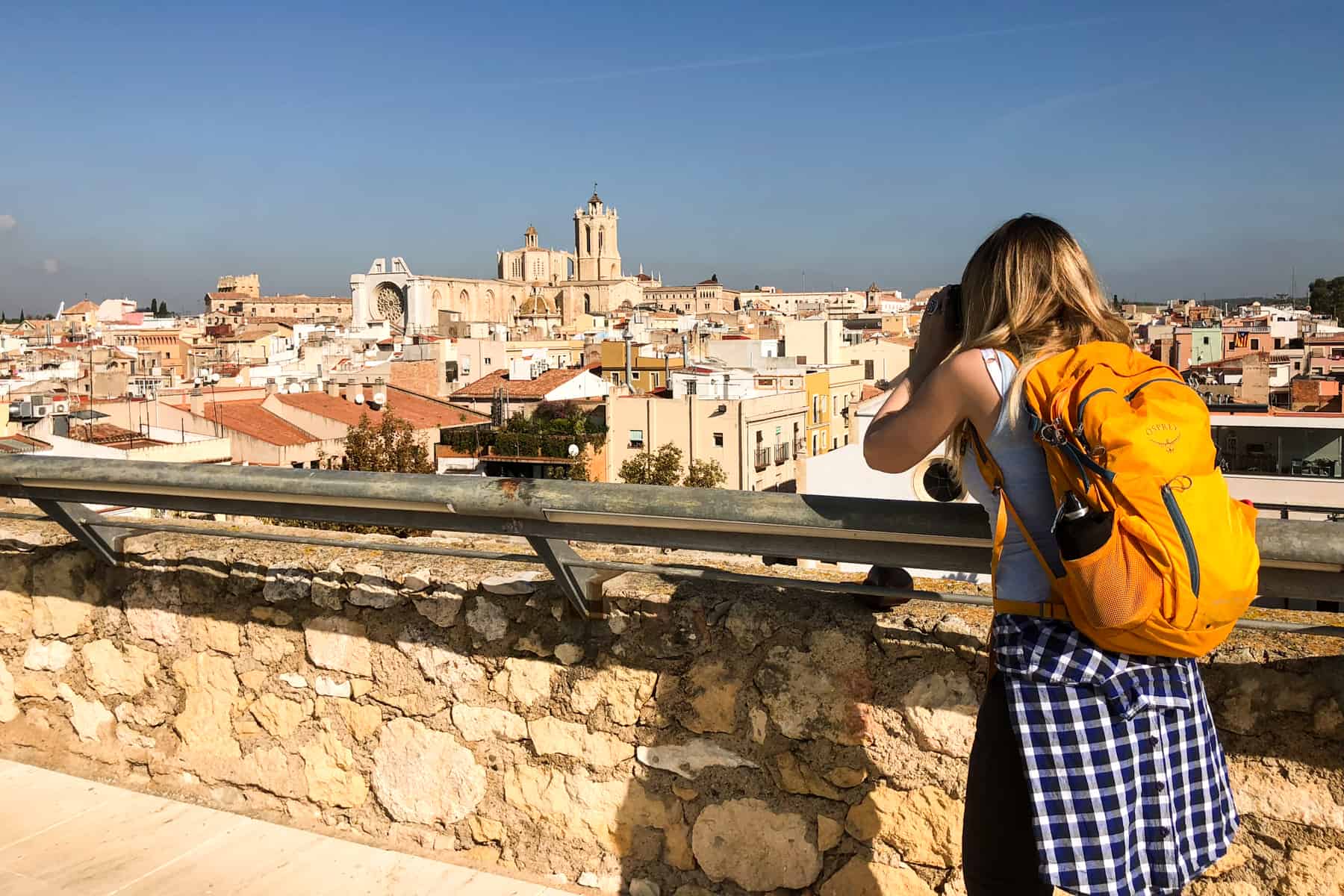
The sweeping view of Tarragona city from the top of the Roman Circus
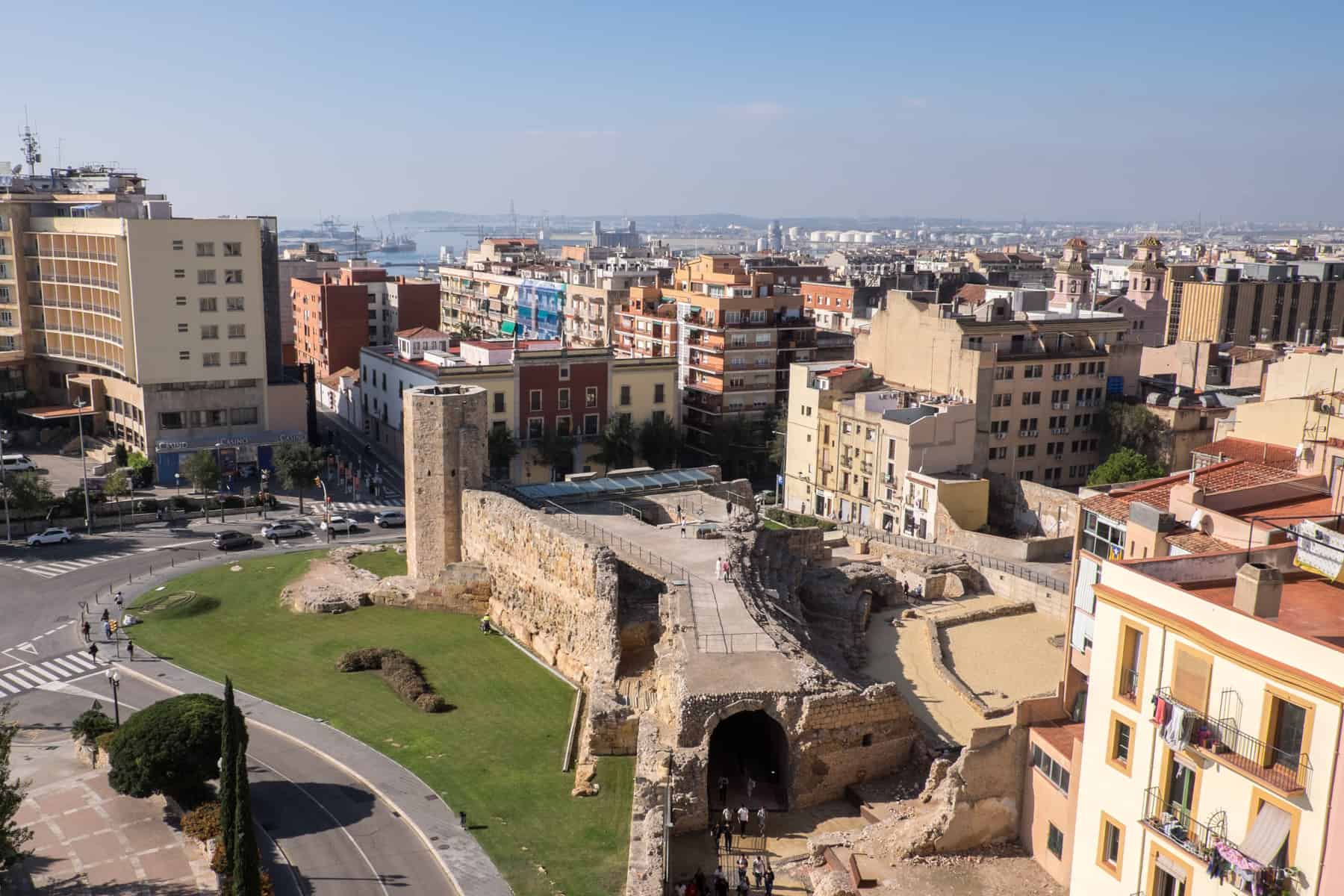
Ariel View of the ruins of the Roman Circus in Tarragona, blending with modern city structures
The Tarragona of today was built on top of what was once the racing circuit, and if you look closely enough at the shop fronts and some structural detail, you may see the archway resemblance where stores have been built on top on roman vaults.
Find Roman Ruins in Tarragona
A walk around the town centre unveils the narrow alleyways and historic streets of the medieval days, but not without the Roman keeping gaze. While sampling some vermouth in the specialist store, Bodega Enric, we only had to walk out into the open square to find a chunk of the old Roman city walls of Tarraco dominating the open square.
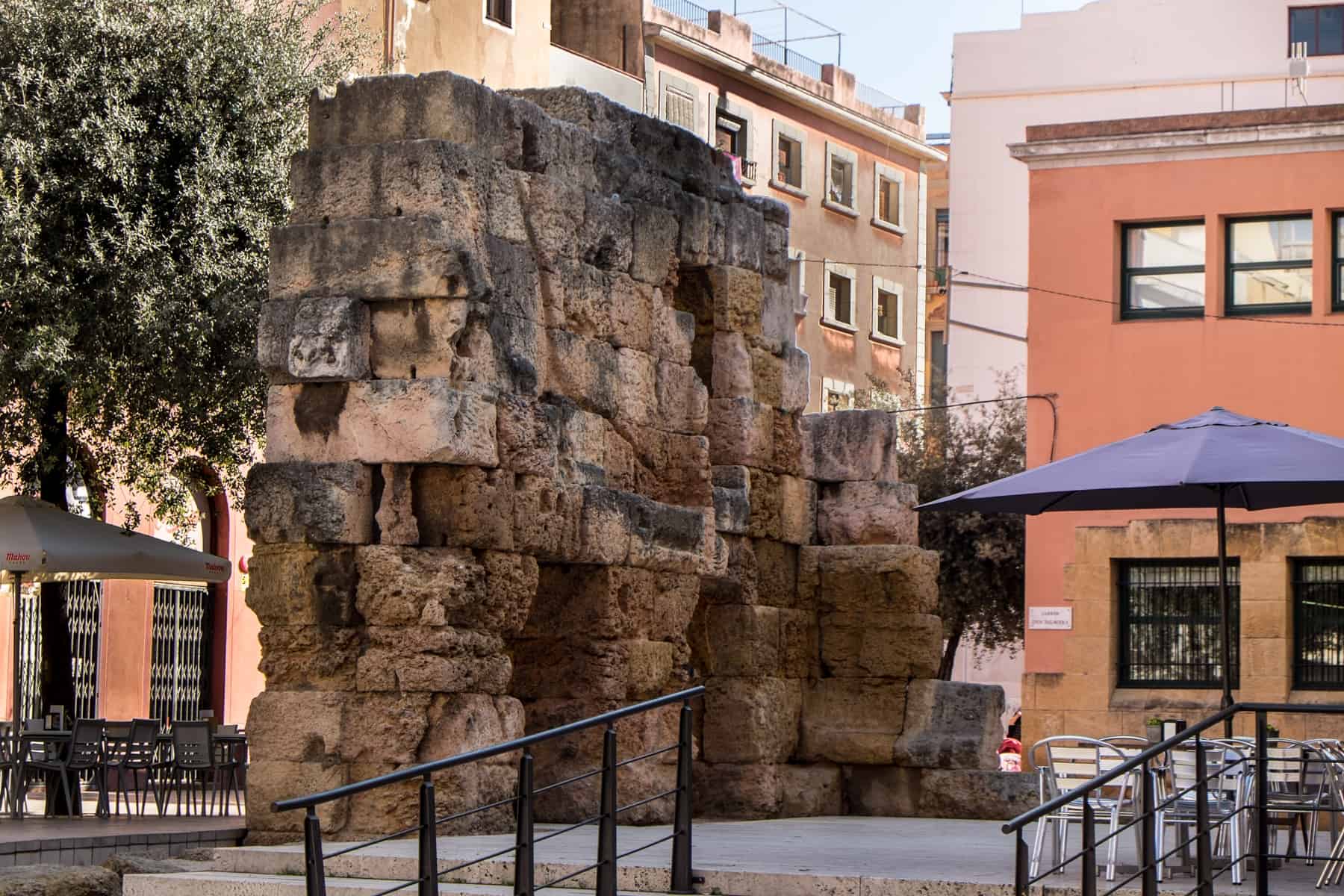
Remains of Roman Ruins in the streets of Tarragona
We wandered the sandy and ochre orange shaded streets in the most elevated part of the city known as Part Alta – once the site of Tarraco’s ancient provincial forum, also known as the Colonial Forum. This area was once the centre of social and political life in Tarraco, and you’ll notice old Roman stone and parts of the old wall incorporated into today’s structures.
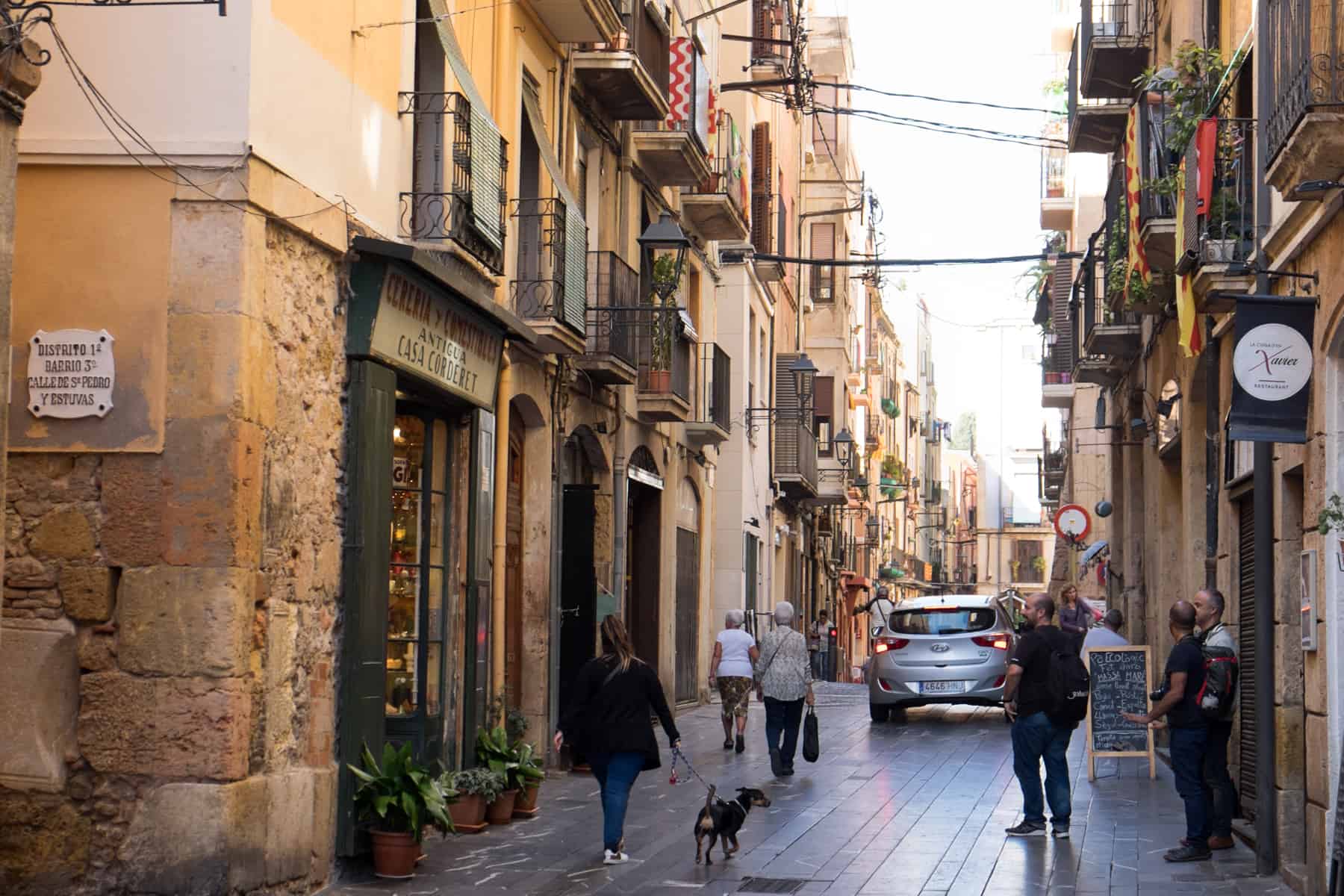
Part Alta – once the site of Tarraco’s ancient provincial forum.
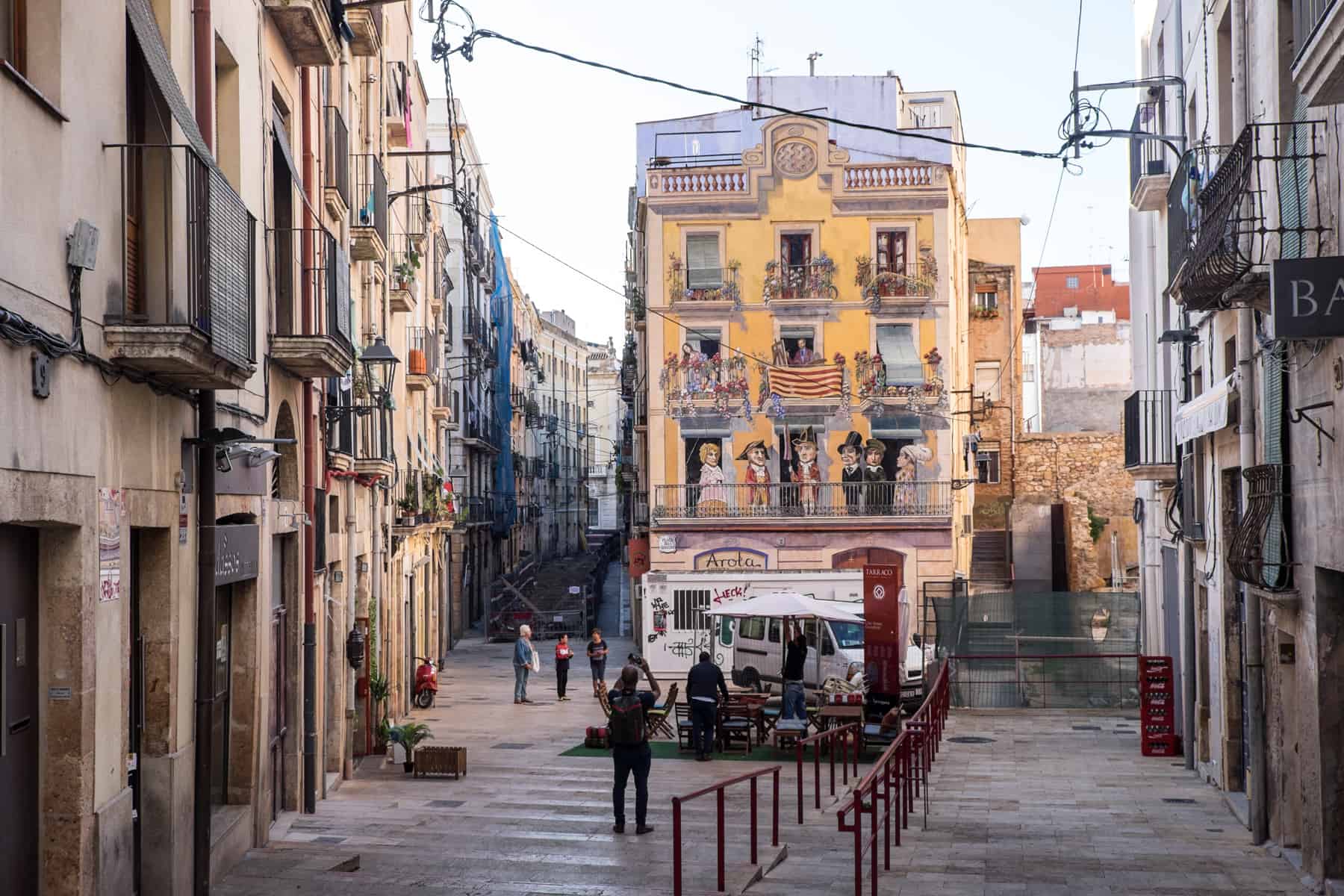
The ruins of Tarraco stacked with Tarragona’s more modern structures and murals.
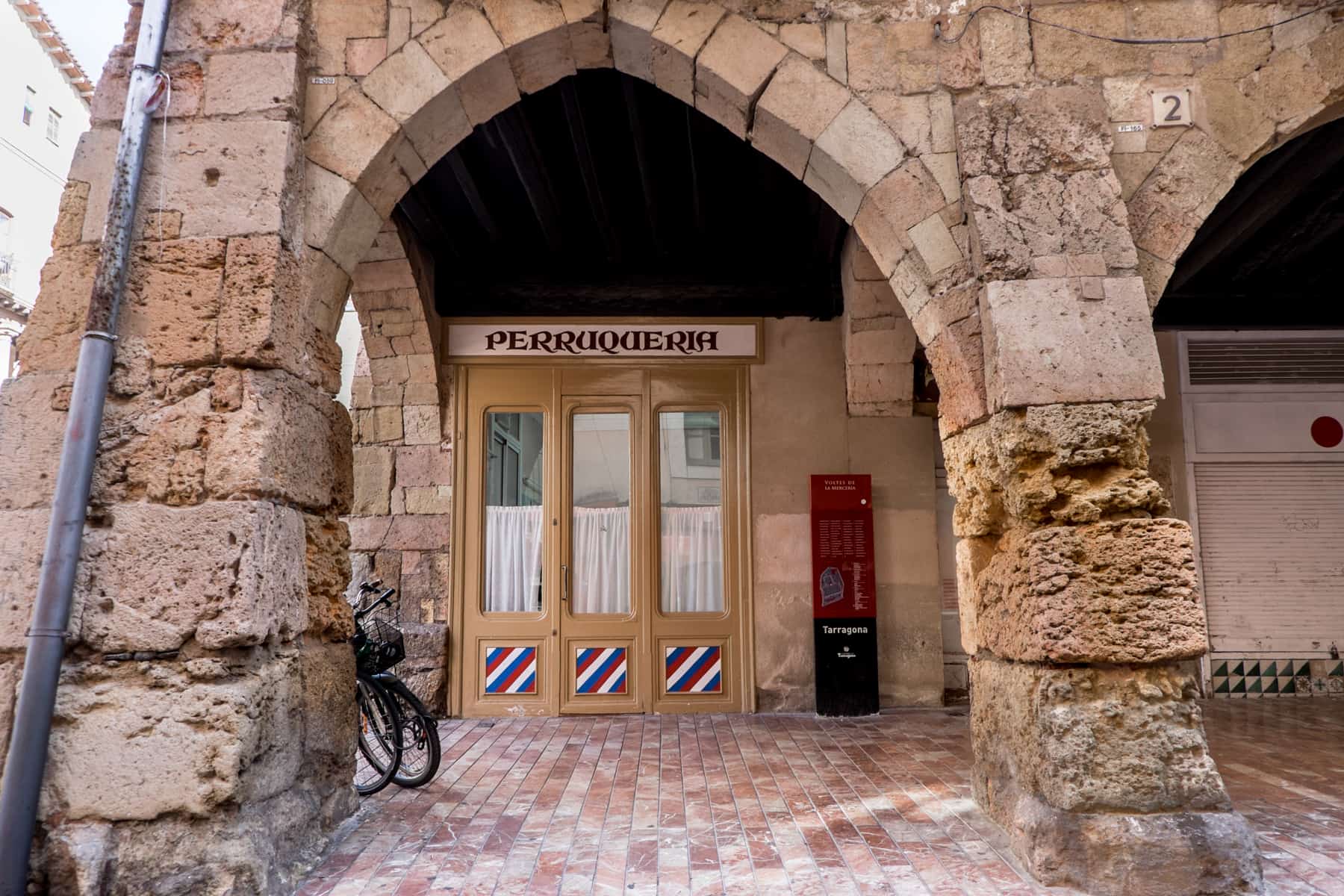
Shops found within Roman archways in Tarragona.
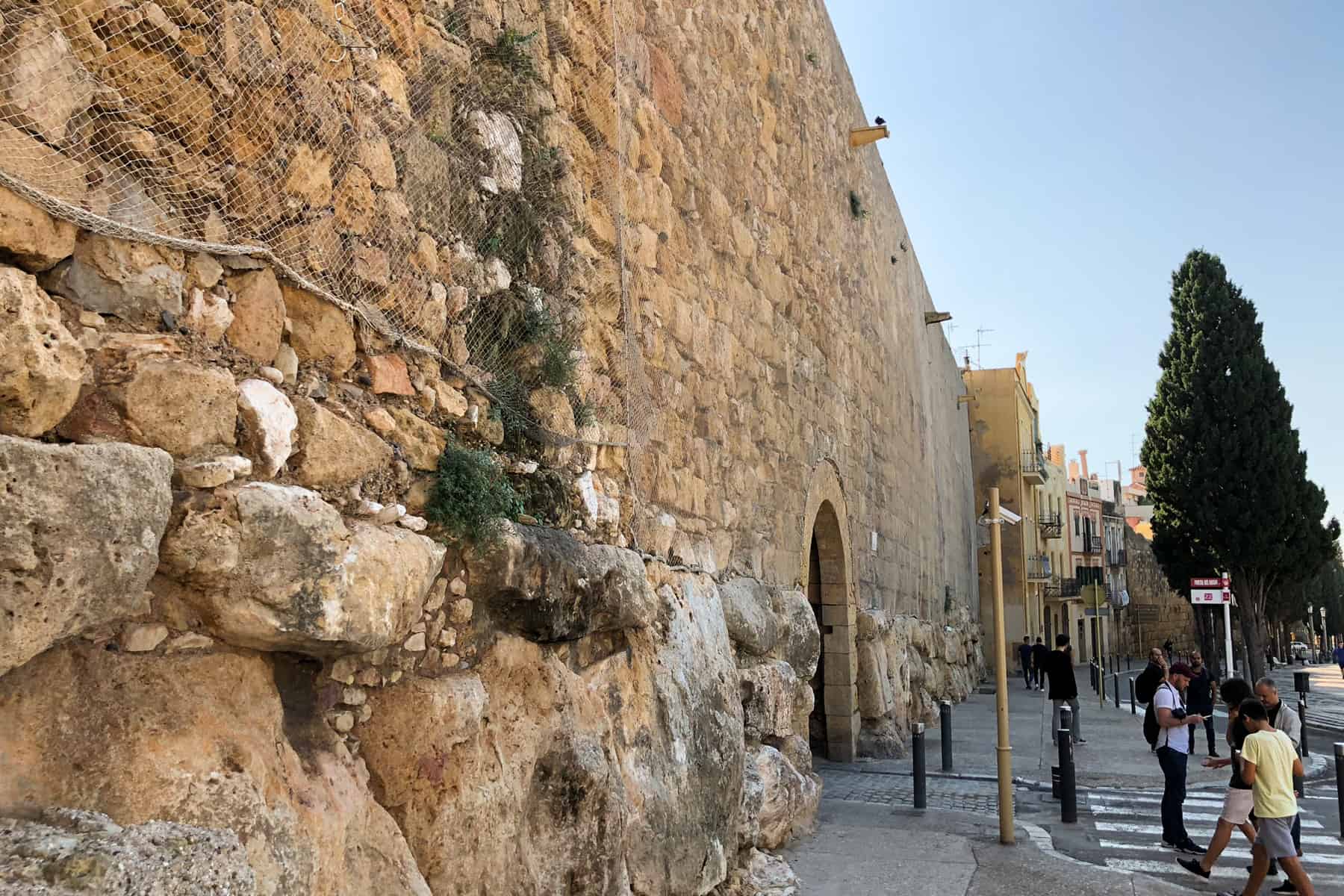
The old Roman city walls still visible in Tarragona, Spain
We lunched in the modern Xamfrà del Fòrum that sits next to the Colonial Forum, marked by the ruins of a big square and a temple.
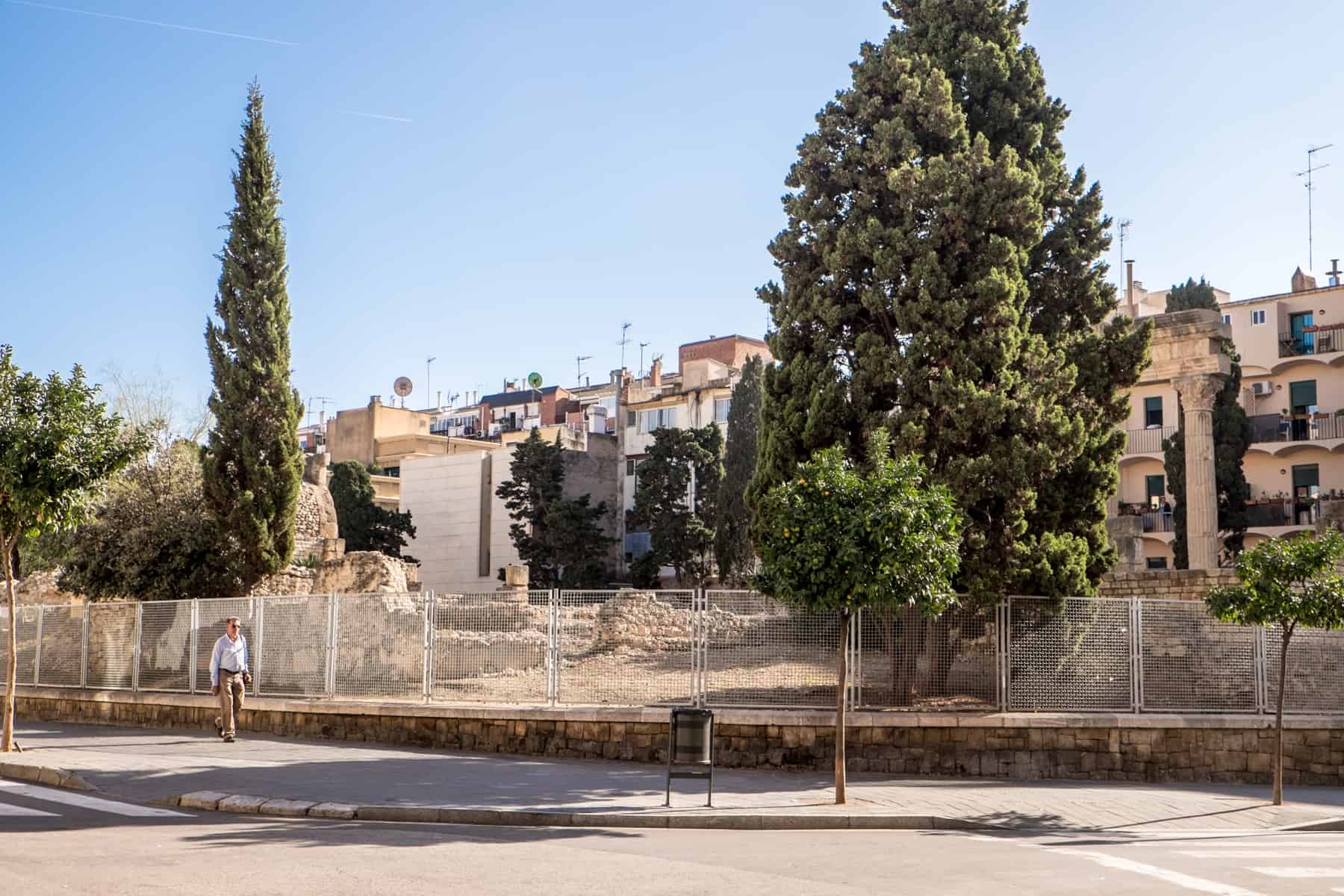
Some Roman ruins in Tarragona city are fenced off for protection, but still visible.
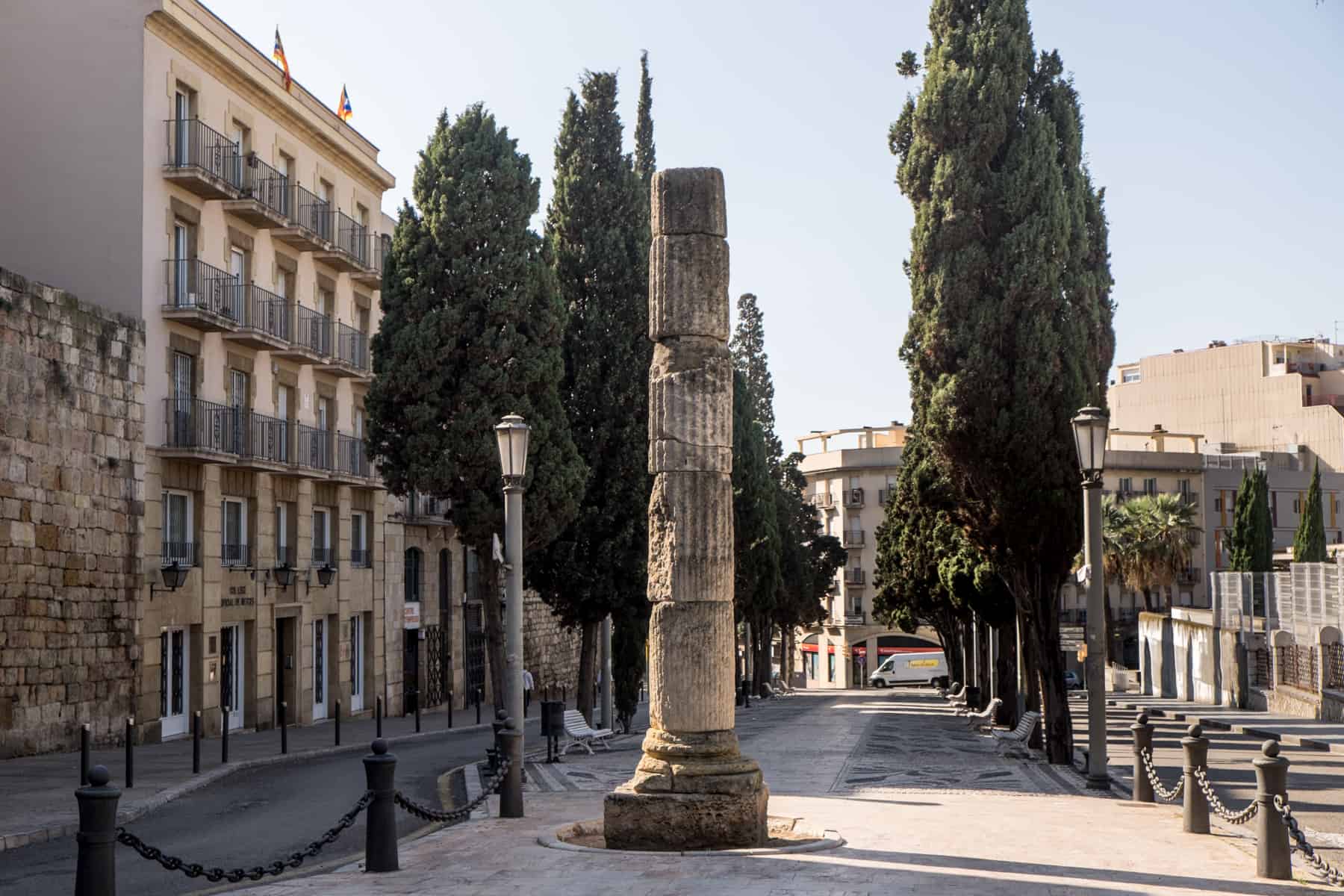
A stone Roman Column in the middle of a pedestrian street in Tarragona
Close by, the modern-day architectural examples by Catalan artist, Josep Maria Jujol can be found. The Theatre Metropole (designed in 1908 with a cruise ship style interior in antithesis to traditional theatre design) and the Mercado Central de Tarragona (opened in 1915 with arched windows and naves, in contrast to standard rectangular market buildings) shouldn’t be missed in a retro juxtaposition to the city’s ancient foundations.
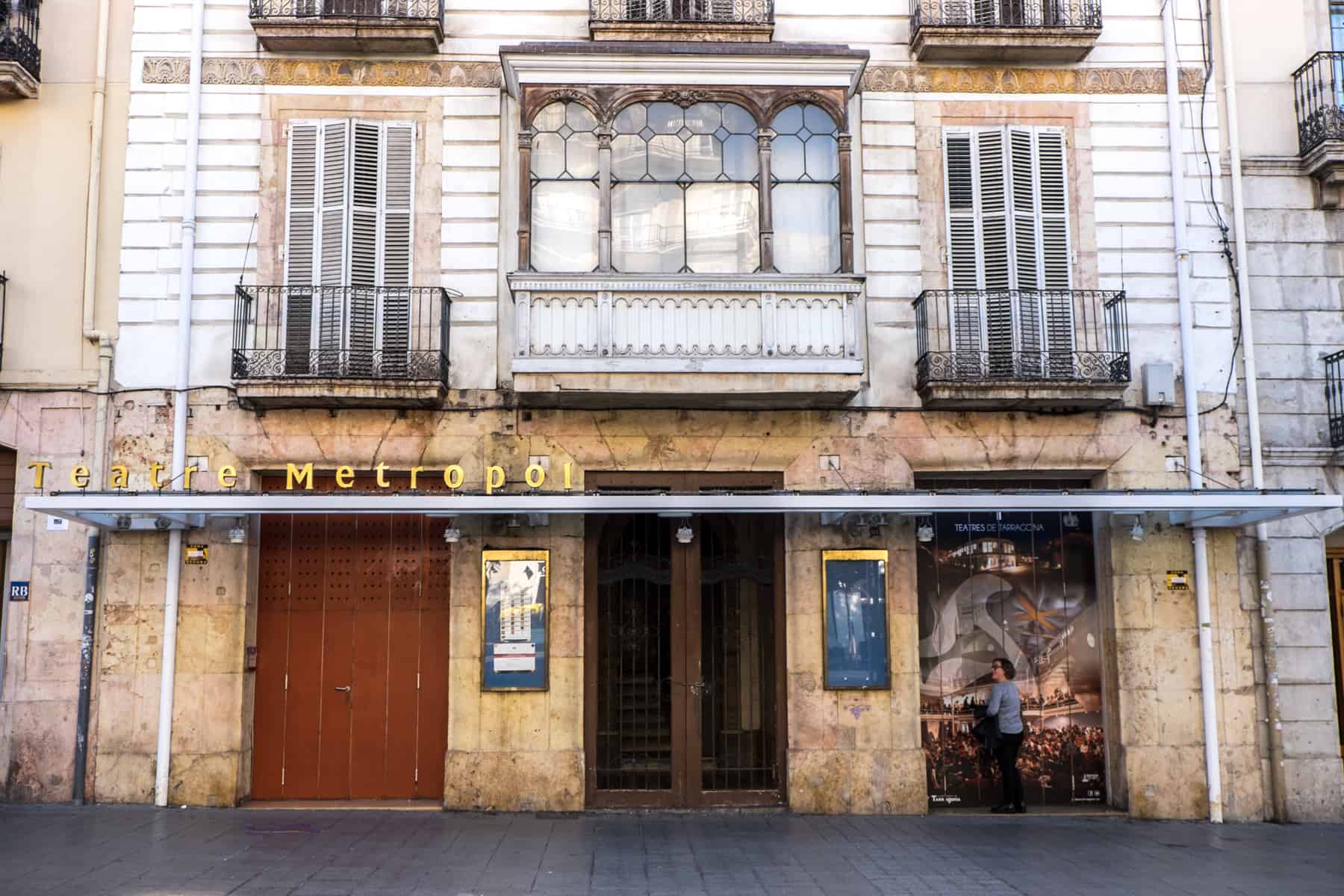
Modern design and art on show at Theatre Metropole – in juxtaposition to the Roman ruins
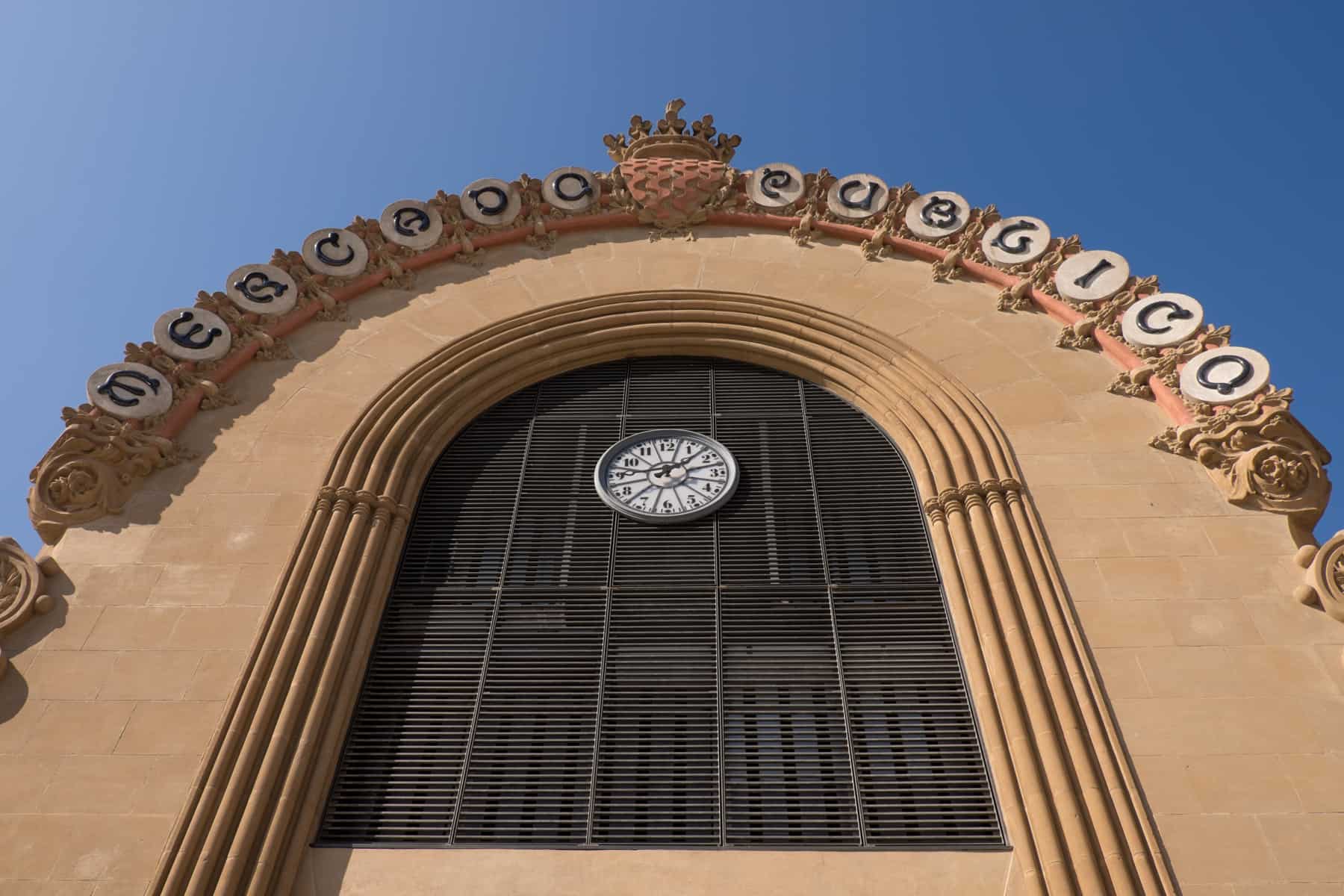
Mercado Central de Tarragona
Roman Temple in Tarragona Cathedral
Saving one of the best until last, we found ourselves back in the very heart of the old city, looking up at the Cathedral that dominates the centre of town that stands on the former Roman temple site.
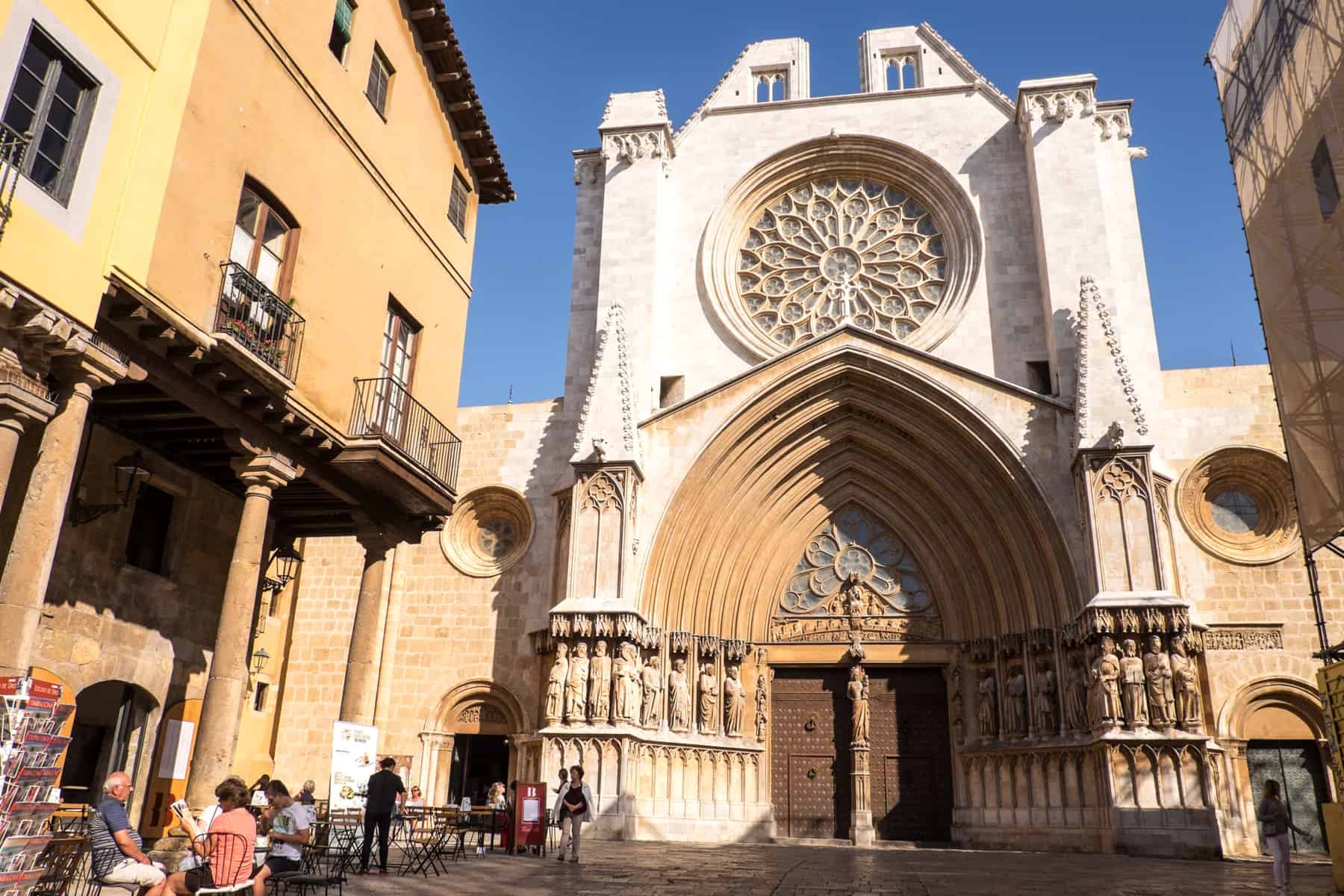
The Cathedral on the site of the former Roman temple in Tarragona
We climbed the spiral staircases for a panoramic view of the city from the bell tower, before climbing back down and peering down into the remains of the old Roman temple wall that is now an integrated foundation to this more modern structure.
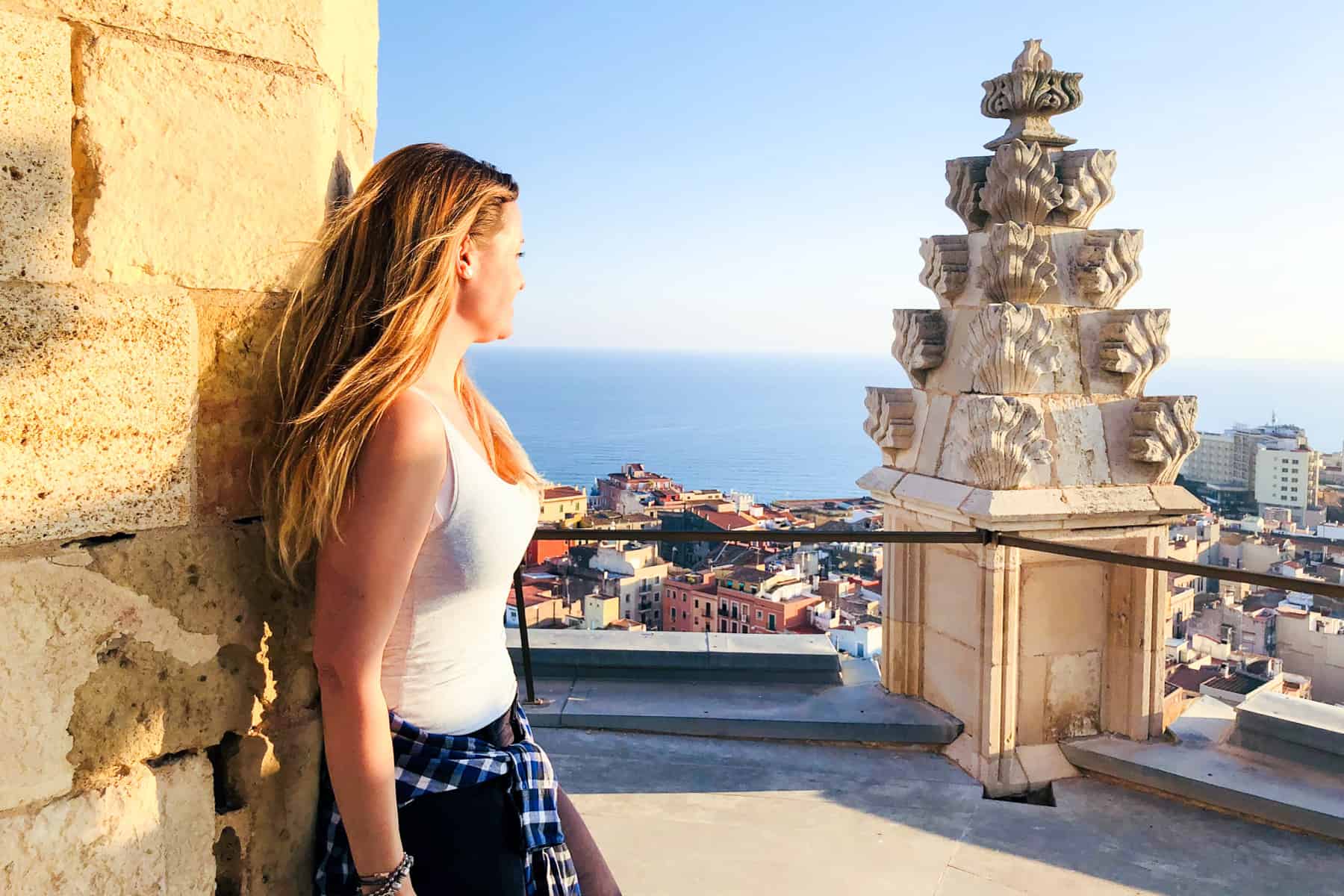
View from the top of the Cathedral (former Roman temple) in Tarragona
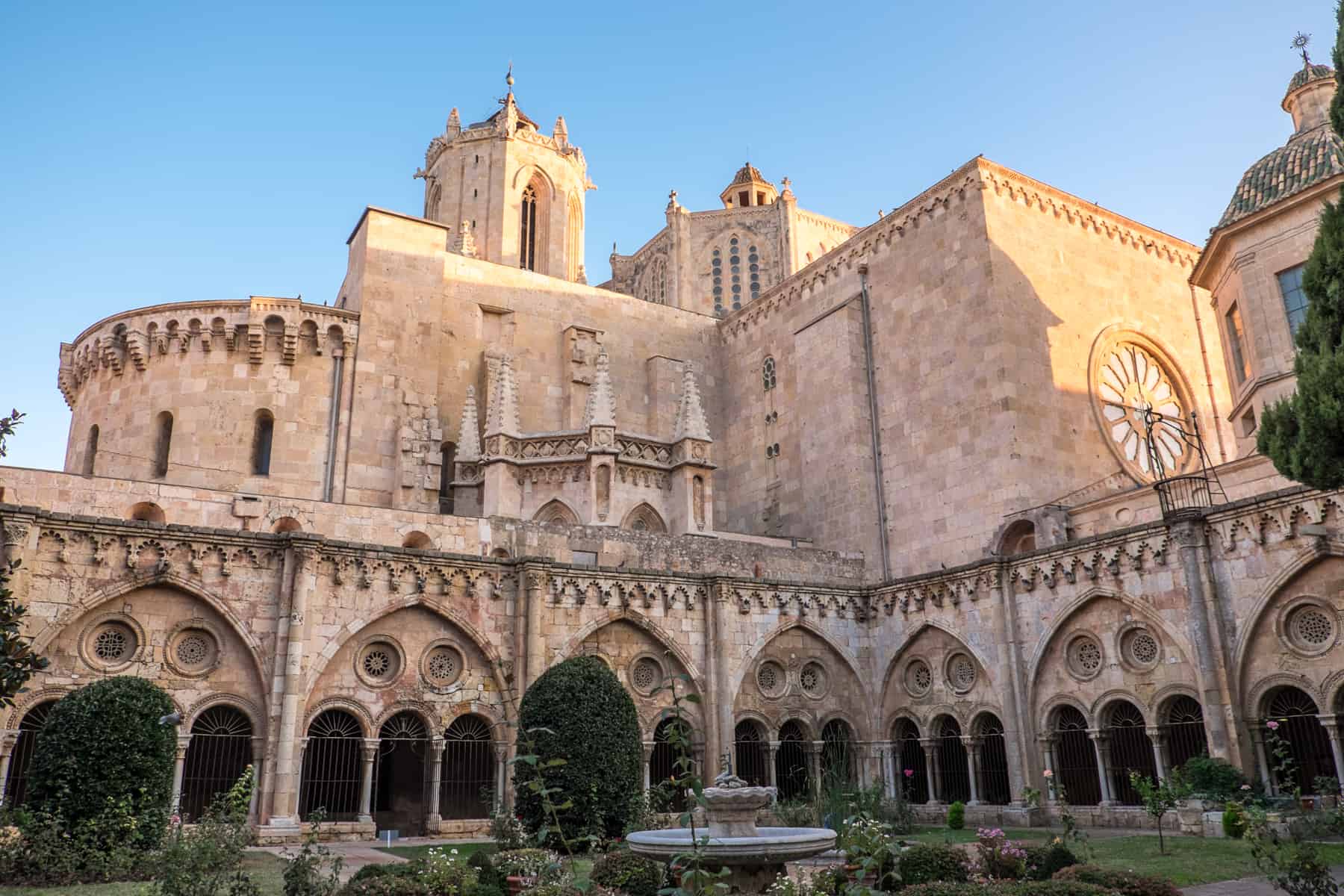
Touring the Tarragona Cathedral – views from the interior gardens
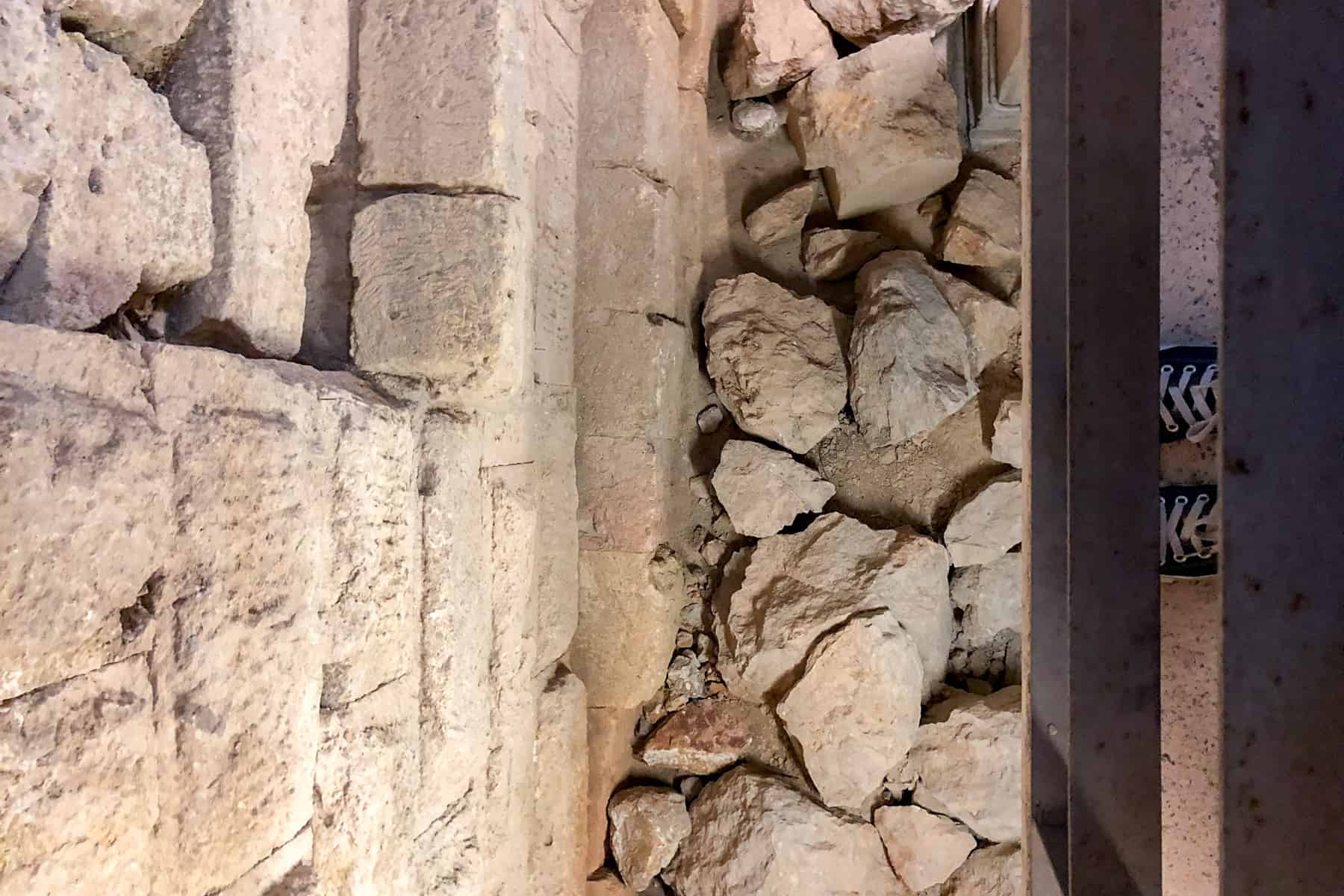
Stones of the former city wall of Roman Tarraco, next to the wall of today’s Tarragona Cathedral
No matter what stands before you, beneath you or around you, the wonder of Tarragona is in knowing that you are surrounded by 2,000 years of history. A living history of one of the most important Roman Empire cities that is still accessible to this very day.
Getting to Tarragona City
By Air and Bus Connections
Reus International Airport (REU) is a short 20-minute, 7km drive to Tarragona’s centre. You can hire a private transfer or take one of several Hispano Igualadina public buses between Reus airport and Tarragona.
AVE Train to Tarragona – Booking a Renfe Train Ticket in Spain
Camp de Tarragona is the High-Speed AVE Train Station, located10 minutes from the city centre.
- You can book tickets via the Renfe website in English and specific high-speed network tickets. All tickets have to be pre-booked since you can’t turn up on the day and book at the station. You can pay by Visa, Mastercard and Paypal.
- The AVE trains have nine classes if you count the overnight trains with sleeper/bed options, but there are two main ones to consider – Turista (a second class option with 2 x 2 seating rows) and Turista Plus which is a little more spacious (with 2 x 1 seating rows). I travelled on each of my journeys with a Turista ticket, which was comfortable enough and great value for money.
- If you are looking to book a multi-stop trip, consider getting a ‘Spain Pass’. This means you can travel using just one ticket for the AVE and other long-distance trains. You must reserve a seat before every trip, as limited space is assigned for Spain Pass holders.
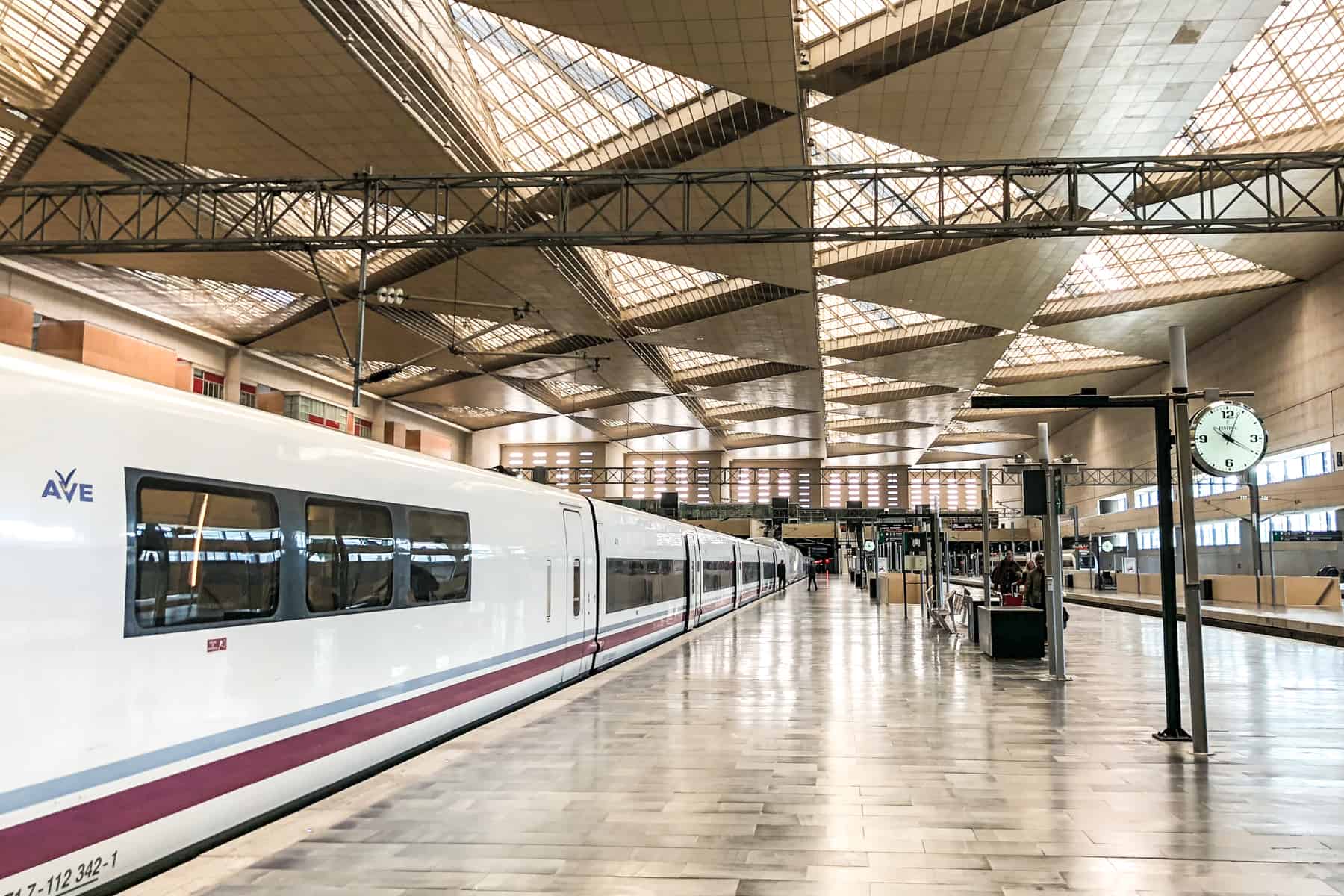
Spain RENFE AVE train at platform
Things to Know About Tarragona
Visiting the Roman Sites of Tarragona
The cost for visiting the core roman sites of Tarragona is €3.30 per site which falls under The Tarragona History Museum (MHT) list. This includes the Model of Roman Tarraco, Casa Castellarnau Museum, the Walls (Archaeological Promenade), the Praetorium and Roman Circus, the Roman Amphitheatre, the Local or Colony Forum and Casa Canals.
If you are planning on visiting many of the sites, it is worth investing in a pass which you can purchase directly from the Tarragona Municipal Tourist Office.
Tarragona Augmented Reality App
The ‘Imageen’ smartphone app (available on the AppStore and Google Play) is a super cool ‘enhanced reality’ app that brings old Tarragona to life. At designated points at local sites, you can interactively learn about history. Holding our phone screen over the Cathedral, we were able to see how the Roman Temple once looked before it.
Festivals in Tarragona
Tarragona may have built itself upon Tarraco, but it does not forget. In May, festivals like Tarraco Viva bring to life the Roman era and re-enactments from medieval days to Napoleon, aid the living history of the city. You can find out more about the calendar of events, with downloadable publications, here.
Further planning for Tarragona
For further information on planning your trip in Tarragona, from Roman ruins and beyond, visit the official tourism website.
My trip to Tarragona was in partnership with the Spanish National Tourism Board as part of their #SpainbyTrain campaign and was one of four city stops. However, all excitable historical opinions remain my own.

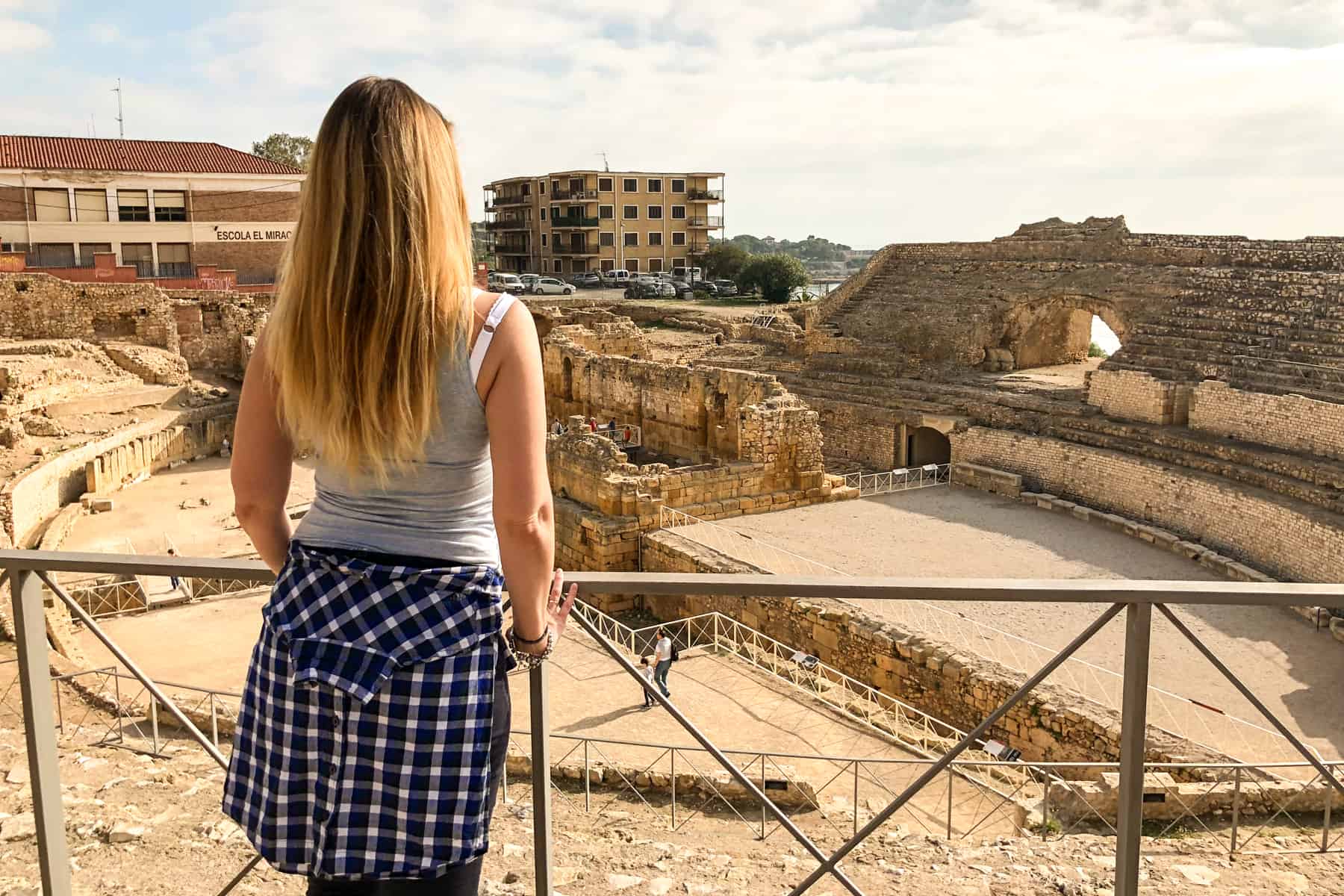
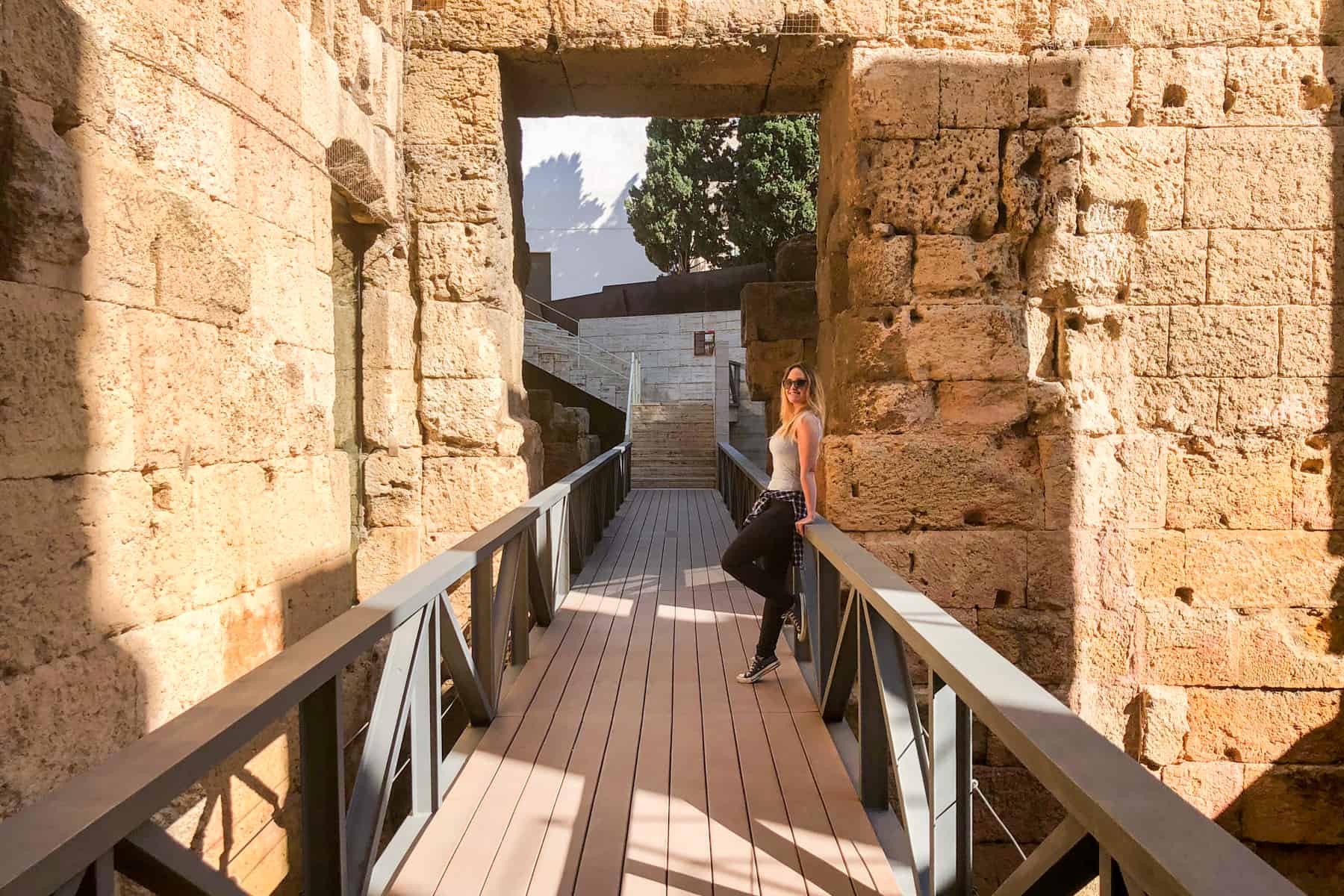
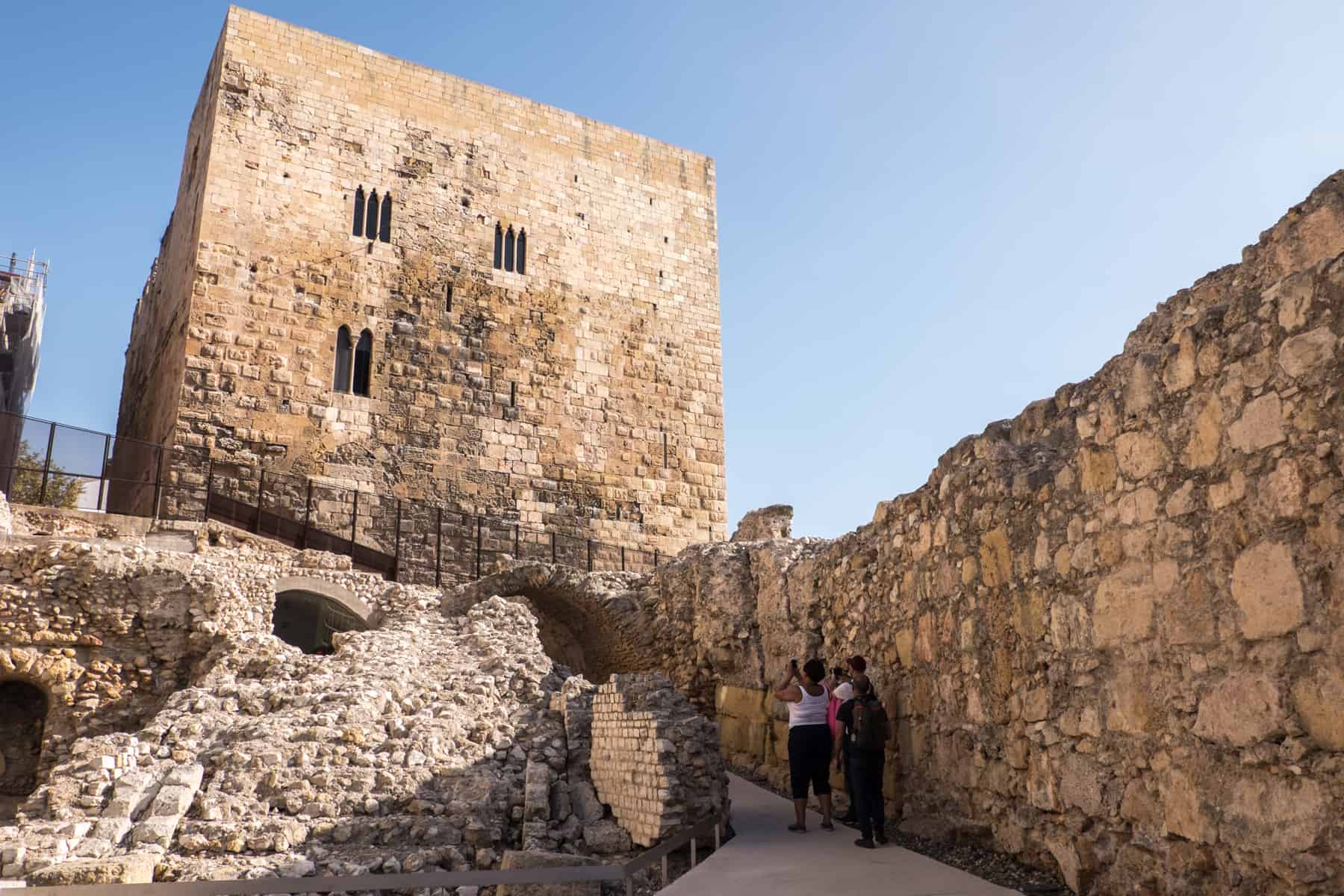
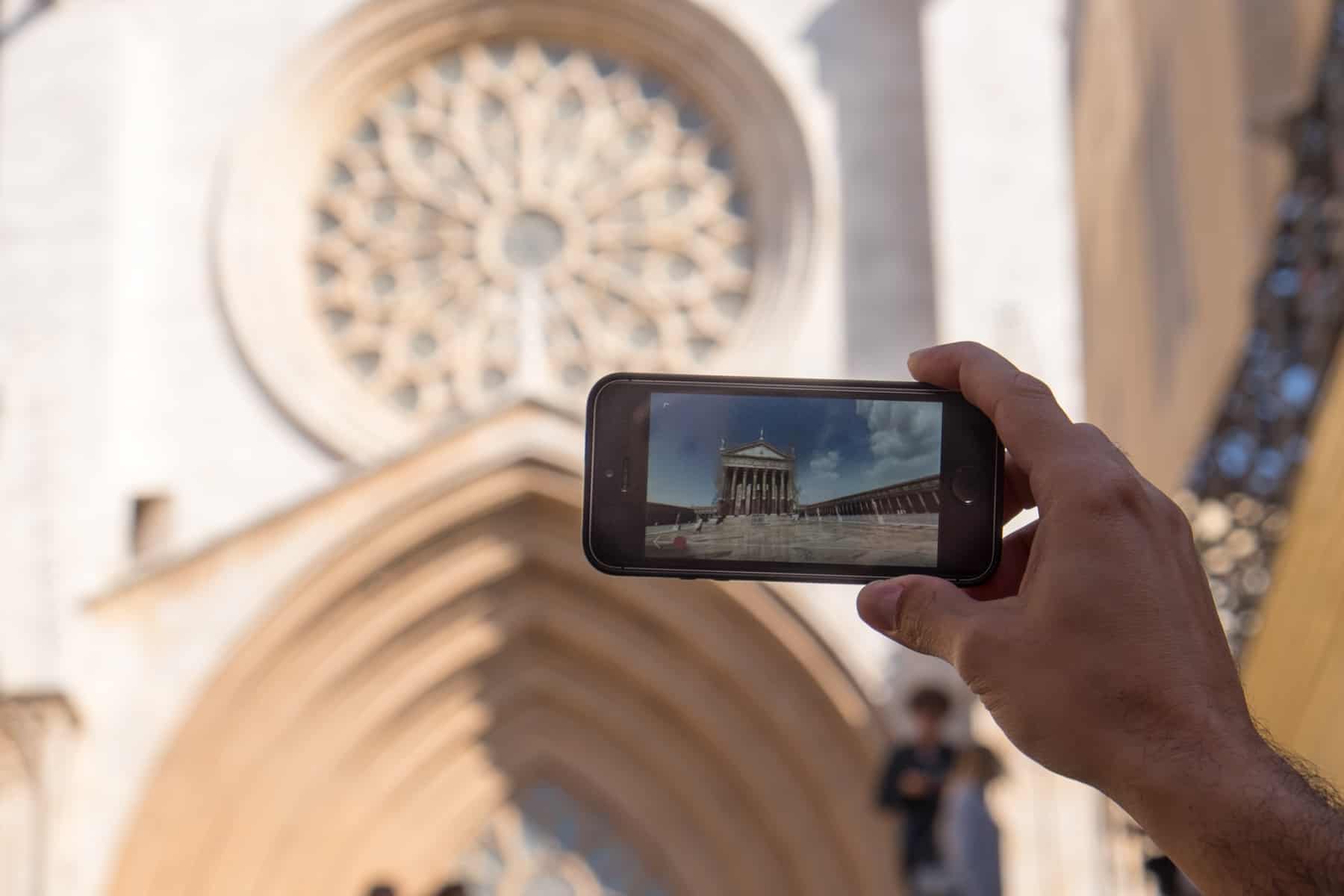

M preston says
I ude to live in Calafell but went to Tarragona most sundays to the antique market loved the varity of coastal ,city, and history. An amazing place and you have just brought it to life again. Thank you.
Seamus Baynes says
Becki, Thank you so much for this deeply informative article. I feel as if I have already visited Tarragona, the app is fantastic. I will now happily immerse myself in your other travel articles.
David W says
I lived in Tarragona between 2013 and 2019. Your very thorough and delightful tour through the city was really nice; it gave me a real nostalgic lump in my throat..I really do miss the place (left due to work drying up and ‘relationship issues’).
I do recommend it to any visitor as it is a less well-trodden destination, for British tourists in particular. The funny thing is, many Brits are familiar with the holiday destination of Salou, yet the much bigger city (and provincial capital) is only 20-ish minutes away – most having never heard of Tarragona. The Roman ruins are probably some of the best in Spain and the Old Town is really lovely, especially sat out on a terrace in the Sun having a Vermouth (a favourite around this part of Catalonia). The weather is pleasant pretty much from March onwards. Highest risks of rain: April/May can be rainy, June can be thundery but all have plenty of warmth and sunshine and course the Summer tends to end (end of August, early September) with some torrential thunderstorms (risk up to October). The weather is generally great. I think the Romans described it as the City of Eternal Spring. It kind of is like that but bear in mind winters, especially at night, do get ‘chilly’: you will need a coat/jacket. Oh yes, Plaça de la Font is probably the main area for bars and tapas restaurants (Quattros was my go-to for cheap and cheerful beer and tapas (not brilliant but good for a cheapish ‘session’). The beach is good in the summer, with plenty of space and also the promenade is good for exercising, running, long walks up to the harbour area. I would probably avoid August (if you have a choice) as that is the French national holidays and a lot head to Tarragona and it does become a bit more busy (especially Portaventura Theme Park in Salou).
Thanks for your wonderful guide once again! Great to reminisce.
Becki says
And thank you for all the helpful extra information and insights!
Katie says
Becky,
What a beautifully written article !
I have been “stuck” in Tarragona for a few weeks with work waiting on a ship to arrive in Port. After reading this post, I now see the city through a completely different lense. You have an incredible eye for photography and did a fabulous job of being wonderfully descriptive while keeping it easy to read. Thank you!!
Becki says
Thank you, Katie! I can only imagine the frustration of being stuck somewhere for a long time, although I am glad you’ve found your way around this wonderful city. Did you get the chance to jump on a train for some other Spain trips?
Linda says
Did you miss the roman aqueduct? It can be walked upon. Sites are closed on Mondays before the beginning of June and election day. Tarragona is well worth a visit for those of us who are Greek/Roman geeks!
Linzi says
Tarragona is a city that I’ve never thought of visiting before but it’s not added to the ever evolving wish list! Thanks for sharing your tips and photos.
Shameer says
Hey Becki, beautifully captured and written about. My wife and I love Tarragona. We have been there 3 times and the next time we go out there, we’re taking the kids as they are now the age of truly appreciating a place and appreciate a little “grown up” adventure.
Daniel says
One of the few remaining unspoiled authentic cities in Spain, a paradise for travel photographer seeking to capture local traditions.
Gary Arndt says
Definitely an underrated city. I went there from Barcelona by car and really enjoyed it. Reminded me of Split, Croatia with how the Roman ruins were built into the town.
Becki says
It really is, and right up my history geek street!